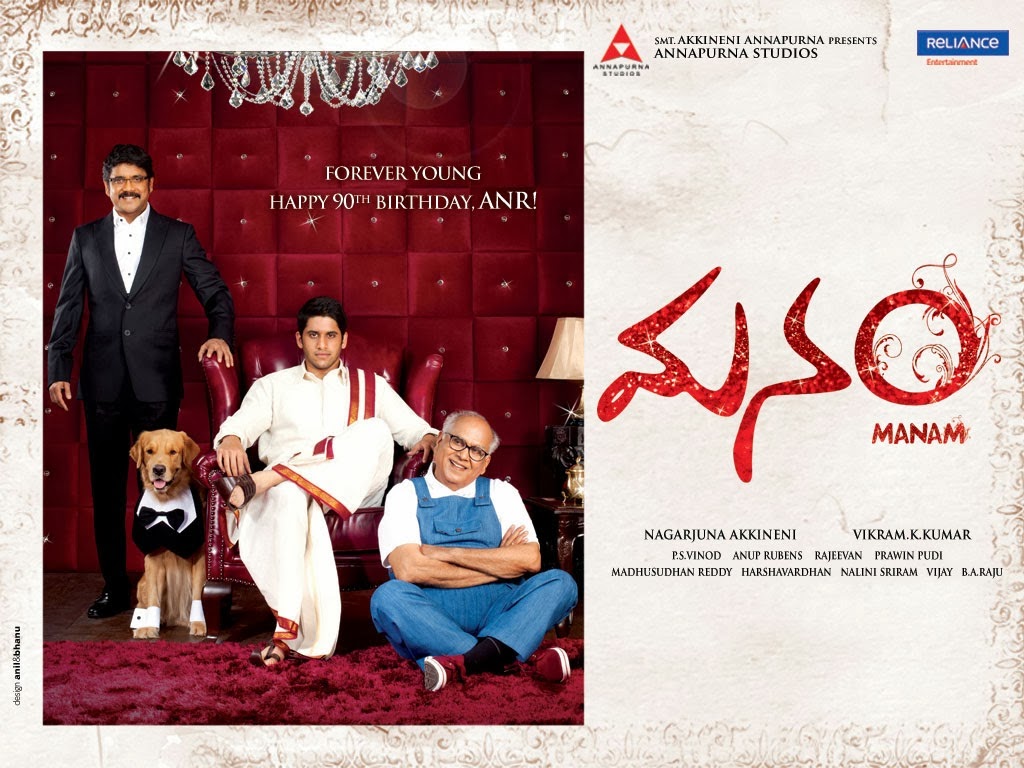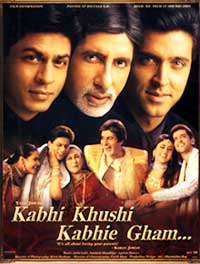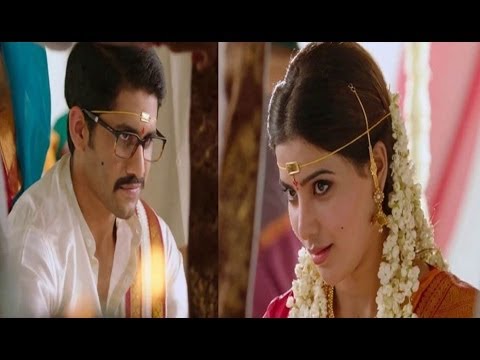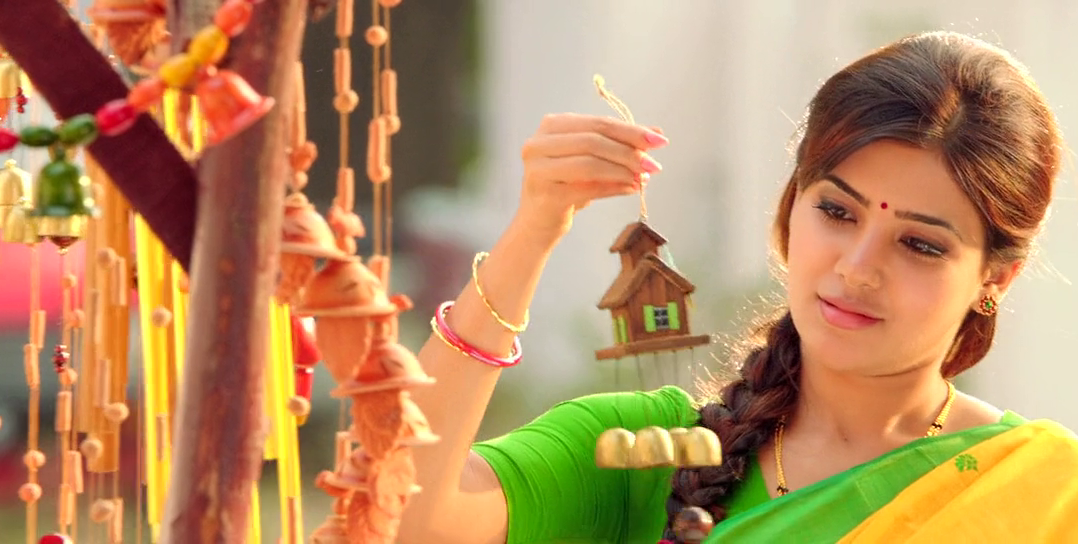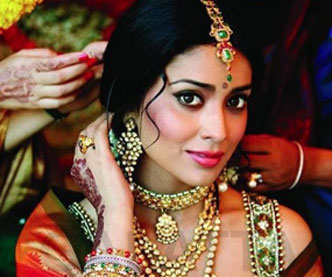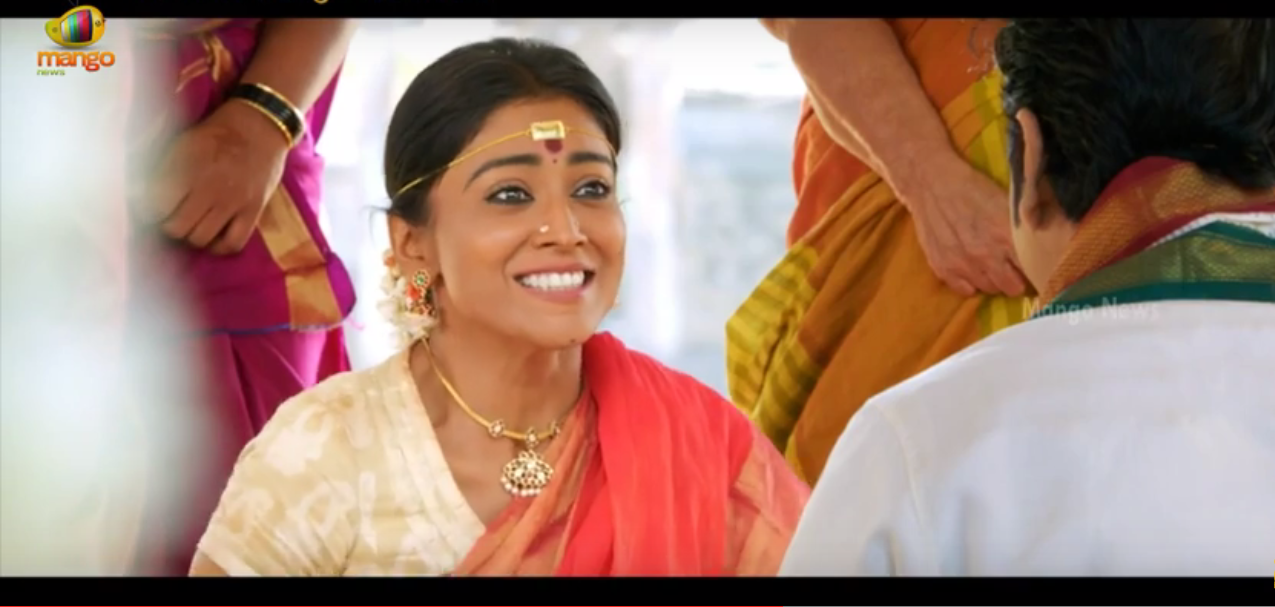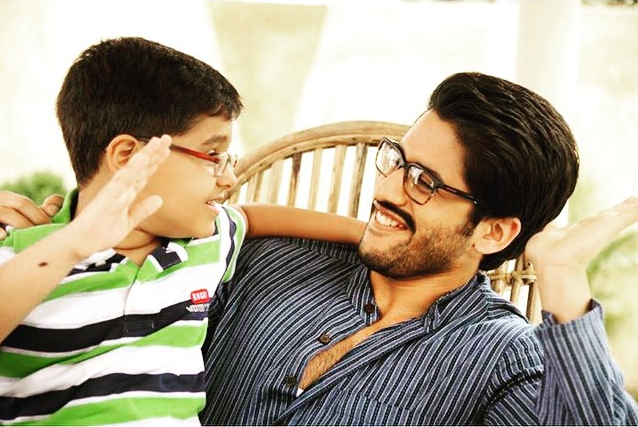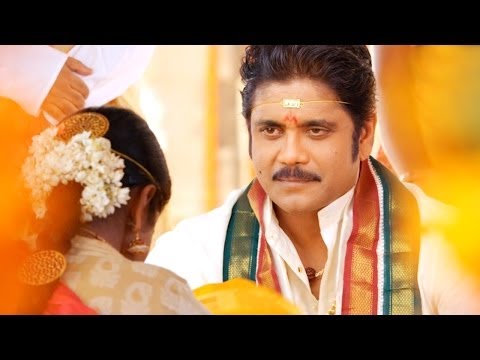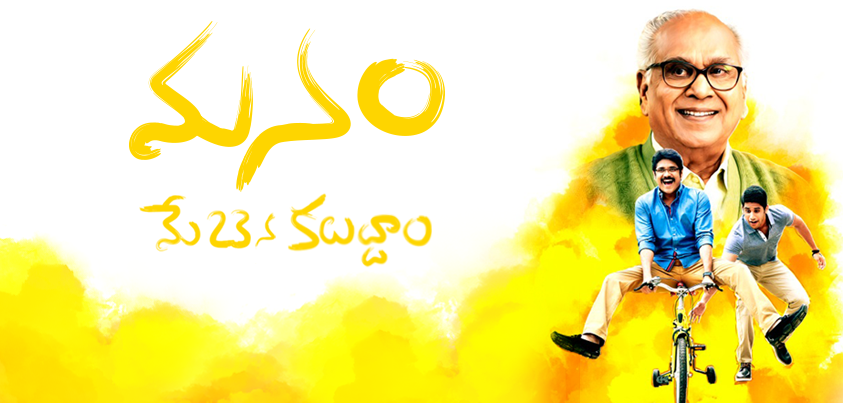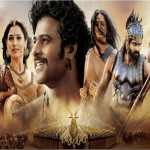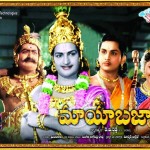On the 2nd Anniversary of ANR’s passing, we initially thought about publishing a Personalities Post to honour this great figure of Telugu Cinema. Then we realised that the best way to remember him on this day would be the way he himself wanted to be remembered. Odd as it is to post an old birthday celebration on his vardanthi, this is the tenor we wanted to set. So rather than mourn the void Sri Akkineni Nageswara Rao gaaru left behind, we give you a celebration in celluloid with a review of his final movie: Manam.
Manam – Film on Familial Love in its Finest Form
This is a cinema—yes it is indeed very worthy of that word—that not only rewards long time viewers of Telugu films, but native of speakers of our mathru bhasha. This is not due to any sense of chauvinistic greatness, but due to that effect of commitment to culture and that impact of language: resonance of feeling.
What is the feeling in this movie, you ask? While casual observers (and ever-present haters) may dub this an ego project for the Akkineni family, the only response I have for such crabs is, “Murkh”. True, this film could be seen as an attempt at braggadaccio, but in reality, it is one of the sweetest and most touching tributes from son and grandson to their beloved paterfamilias: Akkineni Nageswara Rao. It is why we decided that the best remembrance of the Telugu Devadasu on this January the 22nd would not be to publish his Personalities Post today, but to review the film that capstoned a legendary career.
Move over K3G, there’s a new kid in town
Art is not mere joy, my friends. It is the inspiration and the embodiment of life itself. Two movies spanning a decade and two industries spanning a nation managed to do just that. To properly place the significance of Manam (and its festive remembrance of the life and work of ANR), juxtapostion (upamana) with its Hindi counterpart is most appropriate.
**Minor Spoilers Ahead**
Kabhi Khusham Kabhi Gham may indeed retain the heavyweight champion title for Family Films, with the traditional grand song and dance, jet set prance of the wealthy North Indian family (a concept dating back to HAHK, with roots in MPK), its deft avoidance of direct tragedy, and extravagant sets, but the very Telugu Manam edges it out as Family Cinema. This is a work of pure Vatsalyam, the obvious sthayibhava. But it is bursting with this bhava in a way that is doubly resonant.
Anandavardhana is instructive here, with his famous emphasis on dhvani (resonance), and the pure power of this poetic concept is apparent. Ironically, it was not with a rupaka of classical Sanskrit nataka, but with a full length Telugu motion picture, that that great Kashmiri literary genius converted me to his school of Dhvani. Long a stickler for the Natya Sastra and Bharata Muni’s emphasis on Rasa, it was the movie Manam that finally convinced me not only of the criticality of resonance, but its centrality.
Manam is a story about filial and parental love that not only transcends generations, and time periods, but even fourth walls. With double entendres and references readily perceptible to Telugu audiences, this film makes us feel familial love not only in three dimensions and three generations, but on-screen and off. With religous name reversals and real life name reversals, it treats the quick and the quick-witted. To quote my very sentimental mother (with whom I saw this film and to whom I supplied an entire Kleenex box): “Every scene of this movie is strategically shot”. Every sequence, every glance, every reference, and yes, even every cameo (there is not only a fitting cinematic tribute to the career and life of ANR, but a K3G homage provided by the Big B himself).
Story
Manam is the movie that makes us believe in family again. This film touches on the essence of Kutumbham/Parivar, in more ways than one. It evaluates not just how it is not just tragedy that crushes the innocent happiness of the young, but the scorching acid of lust that caves in entire worlds. This is a movie about Fathers and Sons. And much like that Russian classic, manages to fill it with the love of Mothers as well.

It was able to accomplish this in a way that is not preachy, that is not incredulous, but that is all very human. The boundlessness, the ephemerality, and indeed, the fragility of love in all its ethereal qualities is on display. And yet behind this is not blind moha. We understand familial attachment and even the celebration of togetherness, but we also understand the importance of culture, values, and Dharma.
Much like that other movie that resonated with audiences across undivided Andhra (and India), Manam managed to capture the nuances of Dharmic culture. Key scenes prior to foreboding story inflection points demonstrate beliefs (mocked by the uncultured as “superstitious”) that would be as much at home in Ancient Devabhasha drama as it is in modern Telugu Cinema. What’s more, Sanskrit terms understood from Kashmir to Kanyakumari literally bubble like a rolling brook throughout Manam: Mangalam, amangalam, sakunam, kaalam, vidhi , all these terms are unthinkingly used in Telugu, but used by speakers of Malayalam, Hindi, Marathi, and Bengali alike. This is a screenplay refulgent with those ever so crucial terms, indeed, informing critical Telugu language dialogue as well. No word, however, manages to do so more than Vidhi.
Destiny
This movie is as much a movie about Vidhi as it is about Vatsalyam. Stories that transcend not only eras and fashions, but even incarnations cannot help but be. But the destiny that is discussed here, is not always the one that puts a smile on our face. It is not the kind that is open and shut, or fully explored within a lifetime. Indeed, Manam is one of those movies that shows us the tragic beauty in suffering, and how that is not only very much a part of human life, but makes us complete beings.
What’s more, it is destiny that condemns us when we do not value what we have, when we do not value whom we have. When Selfishness becomes a virtue, when family takes a back seat to feral carnality, then destiny itself destroys us.
It is man’s lust that has destroyed family. It is man’s lust that has destroyed himself. And it is man’s lust that has destroyed his greatest gift: woman. While this movie ever so slightly touches on how love is poisoned by the cavalier and inconstant fancies of lust (even the suspicion of it), it does it in an ever so subtle way that does not corrupt its leitmotif or the cinematic experience of what is very much a Family Film.
Natural comparisons to KKKG are understandable. Indeed, it is Kabhi Khushi Kabhi Gham meets Karan Arjun. And yet, from conception to execution to sentiment, Manam is oh so very original. Expertly crafted, yet approachable and accessible to lay audiences and leading aesthetes alike, it attains through skilfull deployment of celluloid, sound, lyric, and the artistic, a veritable mastery of film craft. However, it is not the film craft of film students and film school, but family film at its finest.

With moving scenes such as the third car driving Nagarjuna-Shriya sequence (you’ll know it when you see it), the piercingly poetic nature of life is served to us, with every drop. It is also the sole, solitary manly tear I will ever publicly admit to. Haasya or Karuna, Sringara or Raudra, in all those moments, the beauty, indeed, culmination of life itself is revealed to us: Prema. It, verily, is nava rasa a la Nag (Nageswara, Nagarjuna, Naga Chaitanya).
Make no mistake, dance beats and nouveau techno-chique aside, this is very much a period film in disguise. Without excessive spoilers, we are taken on a trip spanning not only generations and time periods, but even different families and municipalities.
Full credit to writer/director Vikram K.Kumar (who in the literal Telugu and the Sanskrit wrote this rachana (composition)) for the dexterity with which this play was weaved. Exceptional effort by him and dialogue writer Harshavardhan and story development contributor Mukund Pande.
An opus of outstanding quality, the opening scenes leave us ambivalent, even uncertain. All the myriad threads seem unlikely to be tied. But though Kumar commences it as an open field with many lanes, he skilfully ensures that all the paths converge in crescendo. Though it ends in sweetness, the full range of ruchi is granted to us, representing the bouquet of life.
Above all, rarely has a movie so masterfully shown love in all its forms and all its suppleness. True this is a movie about Fathers and Sons and filial love and Amma’s Prema, but romantic love is treated ever so charmingly. It is not with the prurience of band baaja baraat or the all show but no substance of dilwale, but the very delicacy of love and tender affection that defines the foundational relationship between man and woman. Nagarjuna and Shriya managed to accomplish that with these characters, not only across time periods, but across life times. Indeed, nothing could be a finer tribute to the love ANR is said to have had for his wife Annapurna gaaru (who supported him from behind the scenes), than this cinematic production. But why attempt to say what the screenwriters themselves said better, and in more poetic terms:
Manushulu ni srushtinchina aa devudey, premanu, manusunu srustinchaardu
God created human beings, he also created Love, and the Mind.
Manishiki praananiki parimithi petta kaligina aa devudu,
Why was God, who was able to keep a limit to the duration of human life…
Manusuku a premaku parimithulu petta laakpoyyardu
Unable to keep limits on the mind and on love?
Andukey chaavu leyni prema penchey kosam, chacchipoyyina manishi ni Malli malli malli srustistuney unntardu
That is why, to further eternal love,
God keeps bringing some people back to life again, and again, and again.

Production
Cinematography in this film is truly outstanding. Tollywood has truly come a long way since the days of black and white. Crisp, digital (near HD) visuals manage to bring all the ebullience of this katha . With picturisation of such a high level, it is not only the epic film that can bowl us over, but even the everyday story of everyday characters. In fact, the rustic beauty of rural Andhra is brought before us in all its dynamic culture & splendour. Only the smile of Shriya and the swagger of Nagarjuna can match the high level of quality brought by cinematographer and director. But why describe what video itself can show.
Soundtrack
It is a movie made by fathers and sons, about fathers and sons, and yet reminds us of the very meaning of the word “mother”, with a single song. I could translate this for our non-Telugu readers, but unlike that idiotic 1 joke in 3 idiots, here we find that never have the words “lost in translation” meant so much. A Aa E Ee nerpina Amma, indeed. In fact, the closest equivalent in resonance has a different literal meaning. However, all Hindi film aficionados will not only understand the meaning of this famous line, but its resonance as well: Mere paas Maa hai.
All praise to the music director Anoop Rubens and lyricist Chandrabose. The theme song of this movie manages, as with K3G, almost as if on cue, to extract tears from even the coldest of stones. Yet, from lyrics to melodies to sentiments, the sweetness of Telugu gives it that something extra, as we saw with that famous song from Chanti. The very phrases pierce the very soul of our being.
Cast
Perennial Telugu comedic favourites, Brahmanandam gaaru, Ali gaaru and the very late, yet sorely missed M.S. Rao gaaru, all made their requisite appearances. Like Nageswara Rao himself, they all defined a generation (or two or three) of film. As supporting cast, reel life and real life, always remember, your performance also matters, on the stage of life. Despite the onset of age, these 3 comedians all play their parts as promised.
Samantha
Samantha effortlessly plays her role in Manam. A veteran now in the four Southern Film Industries, she’s competent to communicate the feelings of ambivalence and antipathy with gusto. She’s able to slide into a more carefree demeanor, however, when the circumstances demand. It is often said that actors enjoy playing villain roles due to the sheer fun. If that is the case, Samantha demonstrates that playing vindictive roles are not without their fun either.
But where Samantha clearly excels is in portraying the nectar-like love of a mother. It is not the romanticised mother of Shriya, but the everyday mother, the everyman’s mother. The near-cloying but yet ever so softly saccharine prema that only a mother can bring. I would attempt to describe it further, but the lyricist has excelled me in a way I cannot match (though I would argue that he has the unfair advantage of expressing it in Telugu). She brought that role (and its diametrical opposite) to life in a way only skilled actresses can.
Shriya
Not since Madhuri Dixit in HAHK (or Sonali Bendre in Dahek ) have the words “Classical Indian Beauty” been so apropos (Urmila fans, fear not, I have a more fitting sobriquet for that transcendental sundari). Although in the early autumn of her successful career as a leading heroine, the curious case of Shriya Saran is one that reminds us of the very blackguardity of bollywood. It is only in this depraved, dubai-run dust bin of debauchery that a woman who reminds us of all that has ever captured the imagination of the Indian man, the Indian woman, in her purest form, would have been edged out for more fair&lovely archetypes, sending her down South instead. As Sridevi has long embodied, though she has it in spades, it was never mere model looks that made the Bharatiya Nari.
An industry driven by model-turned-actresses, and “actresses” who should have simply become models, needs to be reminded that it was not statuesque postures and mannequin looks that made the supreme Stree, but rather, that almost indescribable combination, that priceless formula, that timeless intoxication of: 1 part shakti, 1 part bhakti, 2 parts maternity, and 3 parts modesty, delicacy & mischievity (though I would add 4parts “attitude” to the modern variety…). At home as both the palletoori pilla and the modern MBBS, Shriya shows that, traditional or modern, the saree is the epitome of femine dress, and the Indian woman the very incarnation of feminine charm. This is no mean accomplishment as she achieves this despite being dubbed (fans of Kshana Kshanam know full well the dangers of poor dubbing, having personally suffered through Hairaan..). Her performance truly showed, having earned a nomination for National Award-Telugu, in spite of not speaking the language. But then, what judge or jury, let alone man, could help but fall prey for that face.
Naga Chaitanya
For any young actor, it is a formidable even intimidating task to stand before not one but two screen legends, let alone two that happen to be his progenitors. But Naga Chaitanya deserves multiple compliments for managing to do just that. Having long weathered critics, and a certain wise-cracking cranky director, this was not only a marquee movie but a milestone role for the second youngest of the Akkineni clan. He matured in this film in a way that was able to present the complexity of married life in all its greys. Even twenty-something leers he presented in a manner that wasn’t leering. He even self-depratorily makes reference to his ostensible real life behaviours vis-à-vis his grandfather. Ironically, more than his younger self, he shines the most in the role of a father, making a promising performance for him that bodes well for both him and the industry.
Nagarjuna
A boy who just misses his parents. Despite the obviously middle-aged role that 50 something Nagarjuna gaaru plays, he succeeds in projecting precisely that very boyish quality into his character. This is no small feat for a thespian best known for snapping bike chains to bash college rivals. But as not only audiences but critics have now come to recognise, over the course of two decades Nag has been able to show he is more than just another (insert here) Tolly or Bolly hero, but a serious actor in his own right with such cinematic accompishments as Annamayya and Rajanna. Showing both maturity, shrewdness, and aesthetic taste, he has become a superstar who rather than fighting age has effectively applied it to better his own career, and in the process, Tollywood itself.
In heartwarming fashion, Nagarjuna gaaru remembered his father, who tragically, passed away before the film was released. But as they say with life so it must have been for them with this movie: it is not the destination, but the journey that matters. However wonderful the experience must have been to shoot this movie together, releasing it on May 22nd, 2014, exactly five months after ANR’s passing, was fittingly poetic. He himself said as much during promotion of this movie.
Nageswara Rao

Last but not at all the least, is the original Devadasu of the (Krishna) Delta. Before we discuss his legacy, let us discuss his role in the film.
If this was a movie on vatsalyam, it was also a production of vatsalyam. The filial love of Nagarjuna gaaru was apparent. Both he and his own son crafted this labour of love that not only portrayed the bond of three generations of the Akkineni family, but memorialised filial love itself and celebrated the life of one of Telugu cinema’s immortals.
ANR’s sheer range was unmatched: he played Abhimanyus with the same ease as he did alcholics. Indeed, the movie itself cheekily pokes fun at that with playful role reversals involving “‘iskey”. It is also tasteful in digitisation of his dancing days. Recognising how a man his age would be out of place in a discotheque, the remix number featured only the two younger Akkinenis, but celebrated the paterfamilias himself in his prime…on screen.
In this one cinema, ANR managed to present us with the apotheosis of the Telugu Thatha. The dad’s dad that every Andhraite hopes to grow up with: Graceful and wise, occasionally crochety, but almost always soft-hearted, our screen idol gives us the grandfather we always wanted. And yet, he does this while remembering the childhood innocence of his own movie character.
The vibrance required to play leading men, but the humility to play second leads as well, he was a king, a comedian, and a romantic lead (to the ladies of his era) all in one. If NTR brought gravitas, ANR bestowed humanity. Rather than impossible immortal figures such as Lord Krishna whom mortal men could not hope to match, Nageswara Rao gaaru, more often than not, brought a vulnerability to his roles that reflected our own flawed mortality, and loved us for it. Whether it was Maya Bazaar or Appu chesi Pappu koodu he was an actor who allowed us to stand in his own shoes due to his own inner grace. Appropriately, Nava Rasa Nageswara Rao gaaru most famously played 9 roles in Navarathri.
As fans remember ANR today, rather than write a piece on him, I decided to write a piece on how he and his career and his family wished him to be remembered, and this is my remembrance: Namostute, Nageswara Rao gaaru, Namostute.
But how should we remember this movie?
If Kabhi Khushi Khabhie Gham represented the noon-tide of the Family in the Post-Liberalisation material era, Manam gives us a desperately needed restoration of the Family in an era in desperate need of it.
Karan Johar has often been asked (in some cases even harassed) about making a sequel to K3G. He has demurred frequently, and not unjustifiably. First there is the natural fear that the successor will lack the feeling of the original. Second, and more importantly, is the fact that he himself said that it was a different time and audiences have changed, and even have “maturity”. But if khwahish, pk, dhokha, and other such garden variety garbage cinema are what passes for “maturity” today, then give me “innocence” any day. Audiences have indeed changed, but not necessarily for the better. Sometimes it is not a modification that is mandatory, but a restoration. Sometimes what is needed is a Revival.
It is rare that we make direct exhortations to the members of the film industry, but Manam is a celluloid triumph that must, absolutely must, be dubbed & distributed across India. As with Baahubali, the heroes of the movie are indeed Andhras, but as it yet again features Kannada and North Indian heroines respectively (with Lucknow ladki Shriya replacing the very Sindhi Tamannah), and a plotline worthy of the National Award itself, it is utterly Indic in its spirit. Timeless values implemented in Modern context. Movies like this not only bring the central importance of Family to centre stage, but they remind us of what we are fighting for. It is movies like this that remind us of who we really are. They not only restore our faith in family, but the essence of our very humanity—truly giving us the meaning of the word, Cinema.
Side-comment on Cinema
Tasteless buffoons and characterless cretins may hee haw and guffaw at the antics of their preferred leprechaun of the day, but the sophisticated audience, the principled prekshaka, will priortise cultured cinema over the crass. After enduring nearly a decade of disappointments and hyper-sentamentalised nonsense and some outright ridiculous childishness that stretched credulity beyond all limits, Telugu Cinema is officially back.
The truth of the matter is, despite the Kailasan heights that Baahubali scaled, despite the universal acclaim of Kanche, and despite the love of rashtra redolent in Rudhramadevi, the current crop of quality films commenced with Manam. Simultaneously universal yet cultural, sophisticated yet accessible, elite yet mass, traditional yet modern, Manam (and the films that followed it) have finally managed to demonstrate that hit films don’t have to cater only to the lowest common denominator. Rather than turning our brains off, they should turn our intellects on without turning our hearts in. The key to the classic is not over-acting or under-expecting, but elevating audiences with timeless values and present-day charm, much like ANR himself.
Above all, however, if Telugus take one thing away from this film it should be this: in the world of politics, business, & especially family, replace the word “nenu” &”memu” with
References:
- http://businessoftollywood.com/2016/01/akkineni-nageswara-rao-2nd-death-anniversary/
- http://www.imdb.com/title/tt2926068/?ref_=fn_al_tt_1
